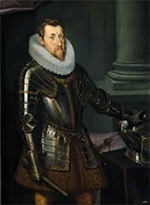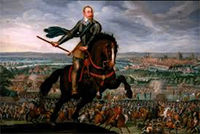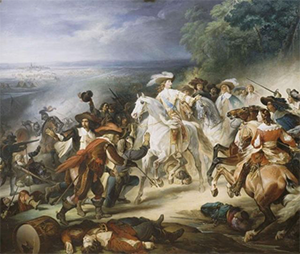The Peace of Westphalia: Ending the Thirty Years War
Part 1: A War of Religion and Politics The Peace of Westphalia was a set of treaties that ended the deadly violent Thirty Years War, which involved most of the major powers of Europe and killed millions of people. The treaties were signed in 1648. Europe in the 16th century was awash with discussions and conflict regarding religion. First Lutheranism and then Calvinism of the Protestant sects rose in prominence and then membership. Accompanying those rises were a series of responses, some violent, from Catholics.  In 1618, the Austrian archduke, Ferdinand II (left), was also the King of Bohemia. A devout Catholic, he sought to impose Catholicism on his subjects. His nobles revolted, in a very violent way, and the Thirty Years War began. To the aid of the Bohemian rebels came more Protestants, from the Union states in what is now Germany. To the aid of the Archduke came his nephew, the Catholic and powerful King Phillip IV of Spain. Spain was already involved in a war in northern Europe. Parts of the Spanish Netherlands had revolted in 1568. The northern provinces formed the Dutch Republic, which took a leading role in opposing Spain and, in effect, Catholic forces during the Thirty Years War. In the summer of 1619, Ferdinand II was elected Holy Roman Emperor. As the fighting progressed, other countries joined in; in the east, Polish troops fought for the Catholic cause. One non-Christian element of the early part of the war was the alliance of the Ottoman Empire with the Protestant Union. Ottoman infantry and cavalry battled against Polish forces but withdrew after defeat in 1621. Other European nations helping with money and manpower included England, France, Scotland, and Denmark-Norway, whose leader, Christian IV, was a Lutheran and was also Duke of Holstein, a state within the Holy Roman Empire.  Catholic forces had much early success, and Ferdinand was soon in control of much of northern Europe. The arrival of Sweden, and its famous Gustavus Adolphus (right), in 1630 tipped the scale back the other way, with Protestants regaining much of the territory that they had lost. Entering the conflict with troops that same year was France. King Louis XIII and Chief Minister Cardinal Richelieu were Catholic but sided with the Protestants in order to oppose Ferdinand II. Richelieu feared that a Holy Roman Empire victory would leave France encircled by forces loyal to Spain. The French entry into the war tipped the balance in favor of the Protestant forces for a time. Swedish forces, augmented by French men and money, continued to win victories. In 1637, Ferdinand II died. His son, Ferdinand III, replaced him and carried on the fight. 
The French King Louis XIII died in 1643, and his son, also named Louis, succeeded him. France carried on the war effort, winning a significant victory at Arras and then flooding Flanders with French troops, sending the Spanish reeling. Meanwhile, things went the Catholic forces' way in Vienna. Fighting dragged on and on, for a few more years, even as negotiators from all countries met on and off to discuss terms of a truce. Bavaria, Cologne, France, and Sweden signed such an agreement, the Truce of Ulm, in 1647. Twin Protestant victories the following year accelerated the peace process. Next page > A Peace to End the Bloody War > Page 1, 2 |
|
Social Studies for Kids
copyright 2002–2025
David White




